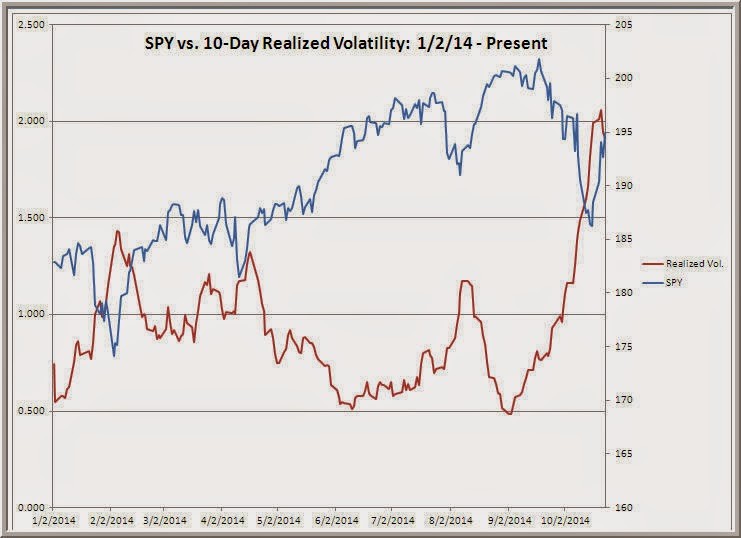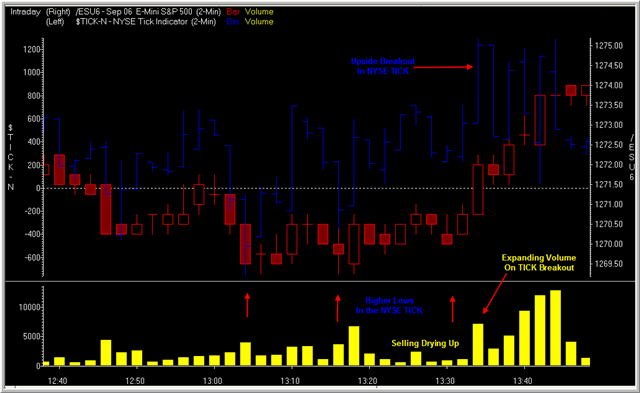TraderFeed Volume in the Stock Index Futures Market Part One
Post on: 14 Июнь, 2015 No Comment

Wednesday, April 16, 2008
Volume in the Stock Index Futures Market — Part One
My recent post offered a simple tool for active traders who were having difficulty getting a handle on the character of the evolving trading day. This two-part series will outline a different set of tools for the same purpose, based on market volume. The core idea is that how the market will trade is a function of who is participating in the marketplace. If large, institutional traders are active, we will tend to see greater price volatility and larger market moves per unit of time. If those institutional traders are not active, the market is more likely to be quiet, with low volatility and smaller moves per time unit.
Those large traders are trading directionally, many times keying off fundamental dynamics (news, earnings reports, economic reports) and intermarket dynamics (shifts in interest rates, currencies, commodities). It’s when these related markets are moving actively that we’re more likely to revaluations of stocks, and hence greater institutional participation (volume). When news is relatively absent and those related markets are not undergoing shifts in their value areas (to use a Market Profile term), it is less likely that stocks will be revalued. That keeps volume in shares low and price action quiet.
A large part of understanding the character of the market day, then, is seeing what is happening in those related markets and seeing how stocks are trading relative to expectations regarding economic news, earnings reports, and the like.
Another way of capturing the character of the market day is to directly measure volume and compare it to the median volume for that particular time period over a lookback period. My research has found that, when this relative volume is elevated (i.e. when we’re trading higher volume than normal in a particular time frame), the added volume almost exclusively comes from transactions of 50 contracts or larger in the S&P e-mini futures (ES contract). Clearly, those trades are not coming from small retail traders. Rather, it is the professional trader who is more active in the market when volume is elevated. The increased volume is the footprint that tells you *who* is in the market at the time.
For purposes of illustration, I went back to March 13th (when the June ES contract became active) and broke down each trading day into nine 45-minute segments. The correlation between the volume of the 45-minute period and the high-low price range for that period was a considerable .83. To give but one example, when the volume of the 45-minute period was above 170,000 contracts (N = 105), the price range for the period averaged .78%. When the volume was below that level (N = 102), the price ranged averaged only .42%. On average, price movement was nearly twice as high during busy periods as during slow ones.

Interestingly, 14 of the 20 highest volume periods occurred during the first or last 45-minute trading segment of the day. Conversely, 17 of the 20 lowest volume periods occurred during the midday periods from 11:45 AM ET to 2 PM ET. That tells us that *who* is in the marketplace changes significantly over the course of the market day. An active trader needs to have different anticipations of price movement early and late in the day compared with midday.
Finally, on a daily basis over the March 13th-present period, daily price range correlates a whopping .86% with daily ES contract volume. When the ES volume has been over 1,800,000 contracts (N = 12), the daily price range has averaged 3.16%. When the volume has been below that level (N = 11), the daily price range has averaged only 1.43%.
Clearly this has important implications for how traders manage trades. In a busier, more volatile market, it makes sense to place stops wider and to let profits run further (i.e. to place profit targets further from good entry points). In slow markets, it makes sense to keep stops tight and take profits aggressively, as these are less likely to run.
Who is in the market dictates how you should trade that market. That varies from one day to the next, and it varies from one time of day to another. I cannot think of a more important lesson for developing active traders.














